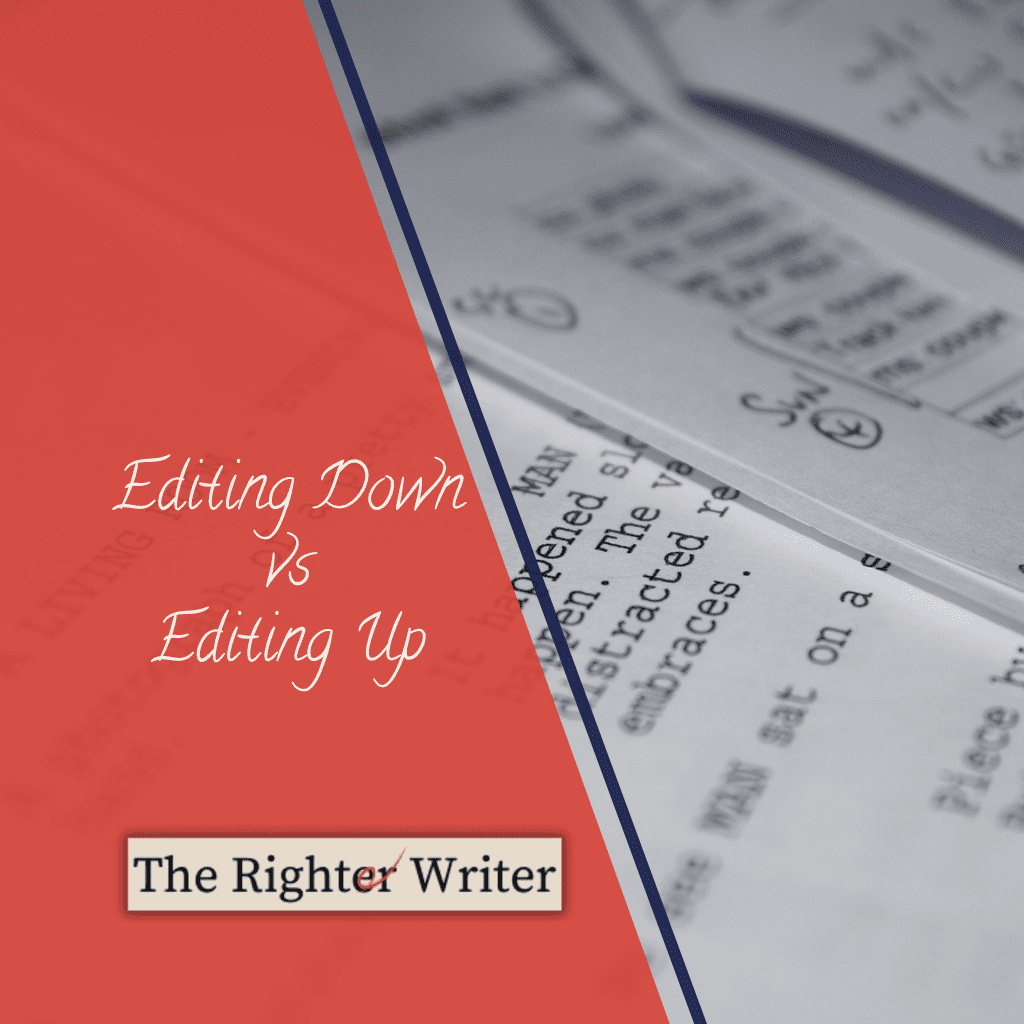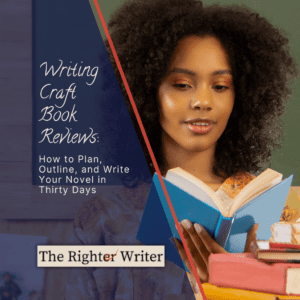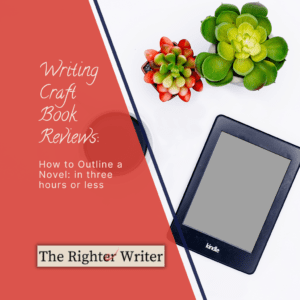
Writing Craft Book Reviews: A Book A Week
Fourth and last (for now!) in our series of book reviews featuring Kindle Unlimited books that explain ways to outline a novel. Let’s get ready for NaNoWriMo!
I'm an affiliate.
Some of the links on this page are affiliate links, but the opinions in my posts are my own, and I only mention products that I like and use myself. As an Amazon Associate, I earn from qualifying purchases. What that means is that if you click one of the links on my site and make a purchase, I might recieve compensation at no extra cost to you.

To begin with, I should tell you: I don’t know if editing down and editing up are actual words people use. They may just be something I made up and not a real thing, or they might be something that I read somewhere once—I don’t remember.
Either way, here are the definitions as I think of them:
Editing down happens when a writer’s first draft is just… too much.
Maybe there’s a lot of description or a huge amount of backstory.
Sometimes authors write every little movement that a character makes.
It might just be a matter of filler words or too many adverbs.
In this case, to clarify the story, the author has to take out some of what they’ve written.
The opposite is editing up.
An author needs to edit up when they don’t have enough explanation.
Maybe they need to transition between scenes or put some downtime between bits of action to give the reader a rest.
Sometimes authors don’t include any description at all, so the reader can’t picture where the scene is taking place.
Adding action beats breaks up long bits of dialogue.
I’m firmly in the editing up camp—let me tell you why.
My first bachelor’s degree isn’t in English or teaching or anything that you would expect from an editor and proofreader. Instead, it’s in theater. I’ve spent a lot of time in theater and film, mostly as an actor who works with scripts.
I’m sure that, even if you’re not into theater or film, you’ve probably seen a picture of a script and know that it’s ninety-five percent dialogue. A script may include a bit of description or a few actions, for instance:
The setting is an old-fashioned living room. She crosses downstage to sit on the sofa.
But mostly it tells an entire story with nothing but the words that the characters say. Scriptwriting is a specialized skill–and not a skill that I am any good at!
I’m getting to the point, I promise!
As I’ve been working on my NaNoWriMo project this month, (check out this post where I explain NaNoWriMo) I’ve realized that every time I imagine a scene, I hear the characters first, way before I see them. I think that’s because, as an actor, I’ve been telling stories with dialogue for my whole life.
So, now, when I’m writing, I tend to first go for the dialogue. I may throw a few actions in there, but 90% of what’s in my first draft is dialogue.
Next, I take my first draft—it’s not even really a first draft, it’s more like a zero draft—and add the description and the action and the thoughts and the backstory.
A bit of prose can easily start out with 500 words of dialogue and, by the time I’m finished adding all the other bits, end up a fully fleshed 1200-word scene.
I’ve read that most other authors edit down. In the words of Stephen King:
“When you write a story, you are telling yourself the story. When you rewrite, your main job is taking out all the things that are NOT the story.”
― Stephen King, On Writing: A Memoir of the Craft

I can’t seem to do that, though; my brain refuses to write everything all at once.
That may be why I’m so behind on my NaNoWriMo project. I’m on track to finish the story by the end of the month, but there is no way that I’m going to finish all 50,000 words.
I’ll just have to spend December editing it up until it’s a fully realized novel instead of a sad skeleton of a story.

I help authors, researchers, business people, students, and web marketers to polish their writing before they send it out into the world.

Fourth and last (for now!) in our series of book reviews featuring Kindle Unlimited books that explain ways to outline a novel. Let’s get ready for NaNoWriMo!

Third in our series of book reviews featuring Kindle Unlimited books that explain ways to outline a novel. Let’s get ready for NaNoWriMo!

Second in our series of book reviews featuring Kindle Unlimited books that explain ways to outline a novel. Let’s get ready for NaNoWriMo!
